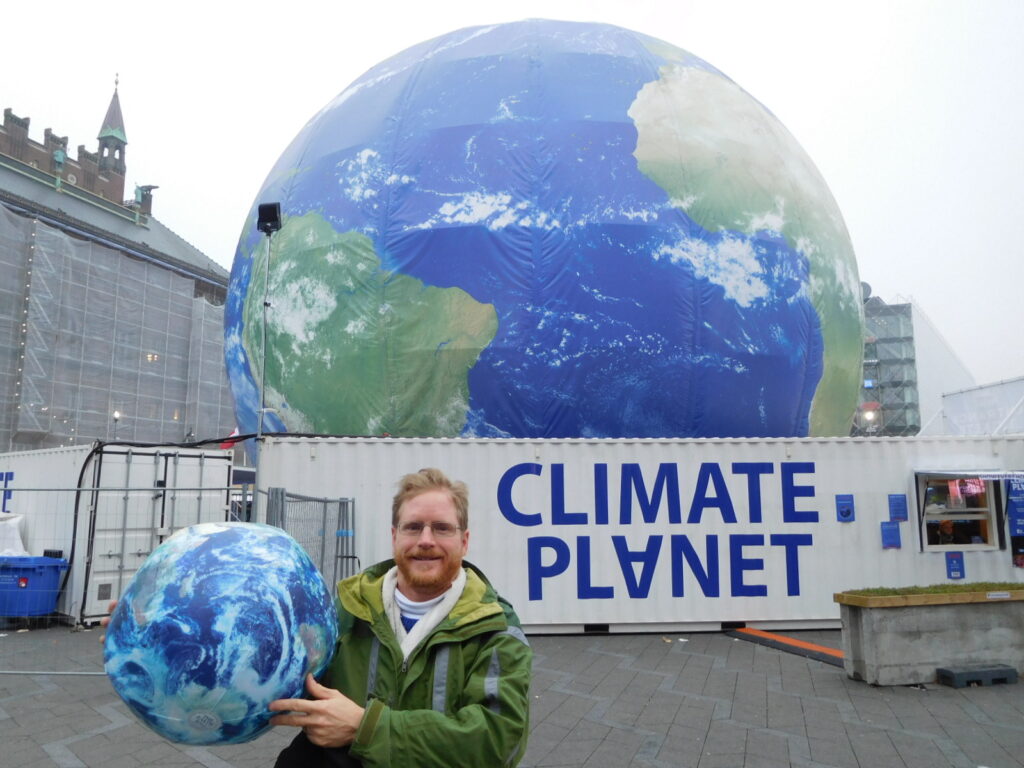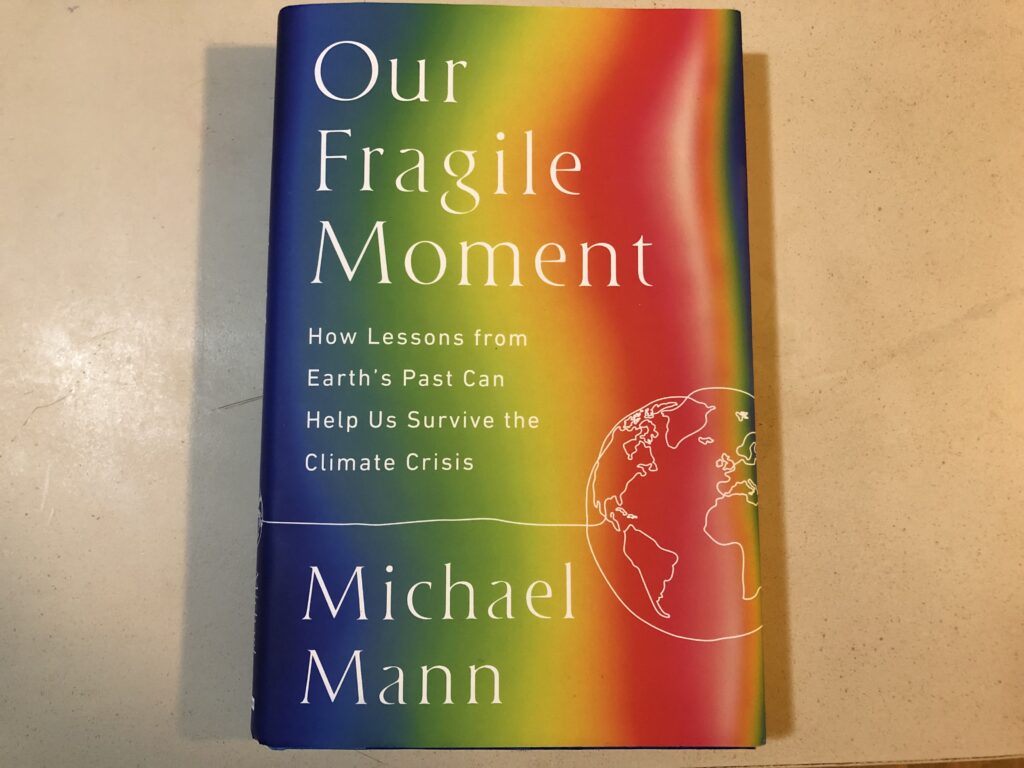
Deeply ingrained in all of us is a curiosity how we came to exist on this livable planet Earth. In addition, we want to know how we can continue to thrive on Earth with the daunting threat of climate change. Even more, with a certain amount climate change already baked into the Earth’s biosphere, we worry if it is too late and should we listen to the voices of doom. Climate scientist Dr. Michael E. Mann does an excellent job of answering these questions in his latest 2023 book, Our Fragile Moment: How Lessons from Earth’s Past Can Help Us to Survive the Climate Crisis.
Climate scientist Dr. Michael E Mann’s influence on me
For the past 13 years, I organized for climate action and I found Dr. Mann’s books to be informative to help me learn the basics of climate science, the threat it poses to us, and how we should respond. When I lived in St. Louis in 2011, I joined a local Toastmasters group to become a better climate change communicator. Immediately after I shared this intention with the group, some of the climate deniers demanded an answer to their question, “How do you know that humans are responsible for climate change?”
I grabbed Dr. Mann’s 2008 book of my bookshelf, Dire Predictions – Understanding Global Warming: The illustrated guide to the findings of the IPCC (Intergovernmental Panel on Climate Change) to create speech to address their question. I specifically went to pages 34 and 35, “Couldn’t the increase in atmospheric CO2 be the result of natural cycles?” I attempted to show how the decreasing ratio of carbon-13 to carbon-12 pointing “conclusively to fossil fuels as the main cause of the rise of atmospheric CO2.” In other words, science robustly shows us the increase in CO2 and other greenhouse gases by humans burning fossil fuels caused the current climate change.
This explanation went over the heads of this audience, but it enabled me understand a vital fingerprint evidence how we know the present global warming is human caused and not natural. Regardless of how I presented this topic on climate change, I knew it would be contentious with this audience with around 30% climate deniers. It was obvious this topic would be so toxic to some of these Toastmasters that I even called this speech, “I am going to drop a stink bomb on you!” I had fun preparing and giving this speech. Dr. Mann’s books have guided me on my climate journey over the years.
In 2012, I reviewed and blogged about Dr. Mann’s book The Hockey Stick and the Climate Wars as a ‘Very Gripping Read.’ Just two months later, that same book inspired me to write a follow up blog about climate deniers, False Witnesses whose Testimonials Did Not Agree.
In 2017, I enjoyed reading the book Dr. Mann co-wrote with Pulitzer Prize–winning political cartoonist Tom Toles, The Madhouse Effect: How Climate Change Denial Is Threatening Our Planet, Destroying Our Politics, and Driving Us Crazy.
In 2022, I wrote a blog reviewing Dr. Mann’s 2021 book The New Climate War: The fight to take back our planet. On a personal note, Dr. Mann was gracious with his time responding to my emails about the best ways to communicate about climate science. He provided climate messaging tips before my November 10, 2020 appearance on Comedy Central’s Tosh.o. Sadly, I did not have a chance to share his messaging on the air, but I was very grateful that he took time to advise me. In addition, I very briefly met him at the American Geophysical Union (AGU) conference in San Francisco in December 2011. In was a chance encounter introduction, but he told me in an email that he remembered me.
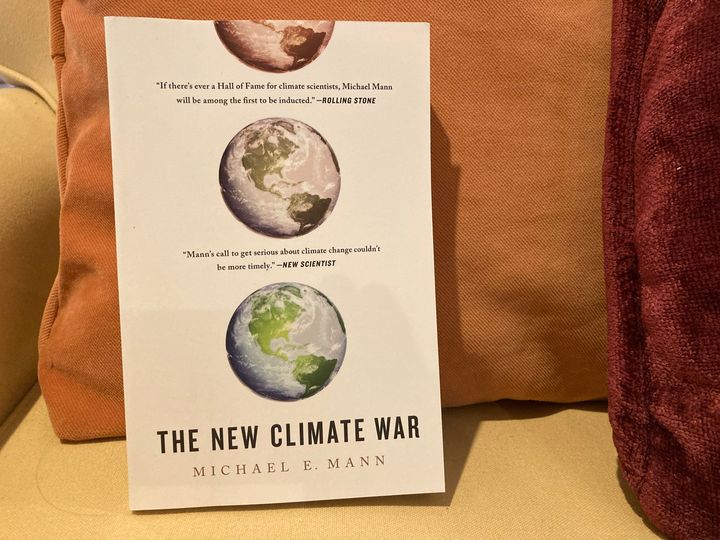
With my deep admiration of Dr. Mann over the years, I was eager to read his newest book Our Fragile Moment when it was released in October 2023. In fact, I went to my favorite independent bookstore, Powell’s books, in downtown Portland, Oregon twice hoping to buy a copy of the book. Dr. Mann was scheduled to speak about his new book there on October 4th, but he had to cancel. When I finally received a copy of his book in later October, I enjoyed reading it.
Wargames, Dinosaurs, Sting, climate deniers, and my thoughts on Our Fragle Moment
Dr. Mann’s book is a fascinating focus on distinct geological moments in Earth’s history, such as
• Snowball Earth and the Faint Young Sun,
• The Great Dying or Permain-Triassic (P-T for short) extinction around 250 million years ago,
• The extinction of the dinosaurs 65 million years ago – known as the transition from the Cretaceous period to the Paleocene period (K-Pg boundary).
• Hothouse Earth or Paleocene-Eocene Thermal Maximum (PETM) around 55 million years ago.
• The lesson of the Ice Ages from the Eocene-Oligocene transition from 34 million years ago to the current interglacial epoch known as the Holocene, starting around 12,000 years ago.
• The Holocene – the current interglacial period from 12,000 years ago to present.
In studying each of these distinct geologic events in Earth’s history, Dr. Mann explores the lessons from these events how they can apply and not pertain to present day climate change.
In reading Michael Mann’s books over the years, I like his cultural references. In the first chapter of his 2012 book, Hockey Stick and the Climate Wars, he referred to the 1983 film WarGames starring Matthew Broderick. The movie is about a teenage video gamer and computer hacker who accidentally breaks into the computer system of the U.S. Defense Department and almost causes a full-scale nuclear war. We are both in our 50s, with Dr. Mann just a few years older than me. It was an entertaining film when I saw it in 1983. Michael was a teenager at the time hanging out with his buddies writing computer programs to solve challenging problems. The film inspired an adolescent Michael Mann to attempt a self-learning tic-tac-toe computer program.
At the same time, WarGames had a clear message about the futility of global nuclear war. The film had a very stark impact on me that humans can destroy ourselves with our technology if we are not careful. The idea that we could annihilate ourselves and our civilization stuck with me decades later as I learned about climate change. Younger generations may not know about WarGames, but I certainly relate to the cultural references in Dr. Mann’s books.
In Our Fragile Earth, Dr. Mann uses another 1983 reference from one of my favorite rock music albums of that time, Synchronicity, by the Police. He starts off chapter 4, “Mighty Brontosaurus” with a quote from the song lyrics from one of the songs off the album, “Walking in Your Footsteps.” The song was written by Gordon Sumner (AKA Sting), the lead singer, bass guitar, and primary songwriter for The Police. This was the quote that Dr. Mann used from the song:
“Hey mighty brontosaurus
Don’t you have a lesson for us
You thought your rule would always last
There were no lessons in your past
You were built three stories high
They say you would not hurt a fly
If we explode the atom bomb
Would they say that we were dumb?”
Dr. Mann wrote, “Do the dinosaurs, victims of a famous sixty-six-million-year-old mass extinction event, have a lesson for us? That rhetorical question was posed by the rock band The Police in their 1983 song ‘Walking in your Footsteps,’ which came out during my junior year in high school. What I and most listeners weren’t aware of then was that this evocative track off the album Synchronicity was actually a parable about the Cold War, nuclear holocaust and––though The Police themselves may not have intended it as such––catastrophic climate change.”
Chapter 4 analyzes what we can learn about the K-Pg boundary (the asteroid event that caused the extinction of the dinosaurs) in relation to present day climate change. This chapter was a key interest in me and will be an interest to others reading the book because of the popular fascination with dinosaurs and the asteroid event that caused their demise. Even more, Dr. Mann weaves a great story about the scientific debate about nuclear war in the 1980s and how that spilled into the ongoing scientific debate over the severity the climate crisis.
Dr. Mann referenced WarGames in Chapter 4 of seeing this movie with his high school friends at a movie theater in Hyannis, Massachusetts. A central character in the film is a NORAD computer, named Joshua. NORAD stands for North American Aerospace Defense Command. As Joshua “learns” in the film, there can be no winner in either tic-tac-toe or a full-scale thermonuclear war. The computer even comments about this lesson, “the only winning move is not to play.”
That same year WarGames was released, the ABC television network aired the film The Day After. This TV movie was about the aftermaths of a full-scale exchange between the United States and the Soviet Union on residents of Lawrence, Kansas with the collapse of civilizational infrastructure. To this day, it is the most-watched TV film of all time. I distinctly remember watching the film at home. That film profoundly impacted me, as well as millions of other Americans about the catastrophic damage of a nuclear war. President Ronald Reagan watched an advanced screening of the film. He wrote in his diary afterwards that it left him “greatly depressed” and motivated him to prioritize efforts to secure an arms control agreement with Russia.
Enter scientist Carl Sagan, a hero of Dr. Mann and mine. Both of us grew up watching his 1980-81 PBS series The Cosmos: A Personal Voyage about the scientific understanding on the origin of life and our place in the universe. Carl Sagan had a distinct way of speaking. As a kid, I entertained family and friends with my own impersonation of Carl Sagan saying, ‘Billions and Billions.’ That was a catch phrase popularized by TV host and comedian Johnny Carson poking fun at Carl Sagan, who was a frequent guest on The Tonight Show with Johnny Carson.
Around the same time of WarGames and The Day After, Sagan and his collaborators researched the possible climate impacts of a global nuclear war. To the dismay of other scientists who thought Sagan became too public and political at that time, Sagan was vocally outspoken about the threat of a widescale nuclear war leading to a “nuclear winter” causing a planetary extinction event to life on Earth, like the death of the dinosaurs 65 million years earlier.
According to Dr. Mann, the models used by Carl Sagan and his collaborators in their nuclear winter work was “The same sort of model, in fact, used by James Hansen in 1981 to study future global warming scenarios.” Dr. James Hansen was then Director of the NASA Goddard Institute for Space Studies. Using those models, Mann noted Hansen predicted back then that continued fossil fuel burning could lead to “potential effects on climate in the 21st century.” Dr. Mann points each of Hansen’s climate change predictions, “has since come to pass.”
Another hero of Dr. Mann and mine is climate scientist Dr. Stephen Schneider of Stanford University. Schneider was a role model and mentor for Michael Mann. When I became a park ranger narrating boat tours in Everglades National Park in 1998, park visitors asked me about global warming, which I knew nothing. Park visitors expect rangers to know everything. To answer their questions, the first book I found in the nearest Miami bookstore was Laboratory Earth: the Planetary Gamble We Can’t Afford to Lose, by Stephen Schneider. Sadly, Carl Sagan and Stephen Schneider argued bitterly over the concept of nuclear winter in the 1980s.
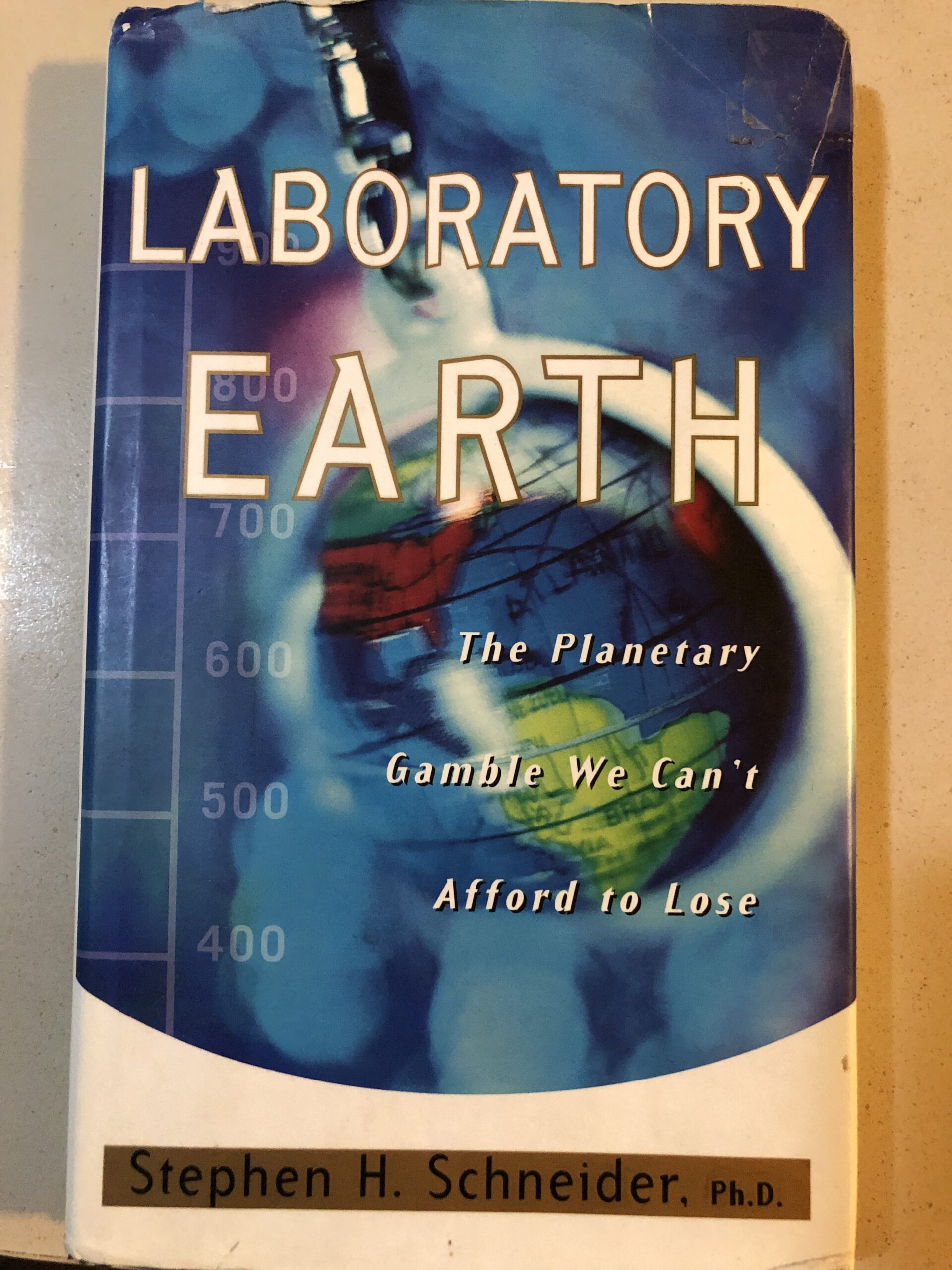
In Our Fragile Moment, Michael Mann wrote that the fight over the severity and the modeling of a nuclear winter “caused a rift between Sagan and Schneider that never healed.” Dr. Mann shared this story as a cautionary tale because it provided “a huge opening for Cold War hawks looking to discredit what they saw as the real threat–Sagan and his open advocacy for nuclear disarmament.” Even worse, those same Cold War hawks who mocked nuclear winter were basically the same ideological driven scientists who then went on to attack climate science. Dr. Mann named several contrarian Cold War scientists, such as S. Fred Singer, Frederick Seitz, and Robert Jastrow. They proceeded to impugn the scientific knowledge on the threat of climate change. Their deceptive efforts were highlighted in Naomi Oreskes and Erik M. Conway’s 2010 book, Merchants of Doubt.
It is another sad reminder that the search for scientific understanding to advise us to avoid nuclear war, dangerous climate change, and even understanding exactly how the dinosaurs went extinct can get muddled by misinformation, political attacks on scientists, and even bitter disputes between reputable and distinguished scientists. As Dr. Mann reminds in this chapter, “True scientific skepticism––as opposed to politically motivated denialism––is, after all, part of what Carl Sagan called the ‘self-correcting machinery’ of science.”
So, what can the K-Pg extinction event teach us about climate change? Dr. Mann writes of seeing “the charred remains Bastrop County Complex fire, the most destructive wildfire in Texas history. The fire began on September 4, 2011, following a summer of unprecedented heat and drought. It burned for fifty-five days, engulfing 32,000 acres.” He was visiting Texas in October 2012 to speak at a conference in Austin, Texas.
Sadly, like the dinosaurs, some things can permanently disappear on Planet Earth. Even worse, us humans can wipe out plant and animal species, even entire ecosystems, on our world because of our actions. He wrote, “The loblolly pine forest that was destroyed was an example of what is known as a relict forest–– a forest won’t grow back in today’s hotter and drier climate. It was a sobering example of tipping points and the phenomenon of hysteresis––a reminder that some things are lost forever. There is no going back.”
Dr. Mann concludes that chapter with this lesson of optimism for us from the K-Pg extinction: “There was nothing the dinosaurs could have done about their plight. They had no means to deflect the asteroid. They lacked agency. We do not. We are threatened with a catastrophe of our own making. And the primary challenge we face isn’t’ the immutable laws of astrophysics. It’s political will.”
Looking into Earth’s geological past should not cause us to fall into climate “doomerism”
If there’s a key audience Dr. Mann wants to reach in this book, I think it is readers who are potentially swayed by what he calls climate “doomers” or “doomists.” His previous book, released in 2021, was The New Climate War. I wrote a blog review of that book in 2022. In that book, Dr. Mann strongly criticized the climate “doomists” who believe it is too late to act on climate. These individuals and groups exaggerate the threat climate change, which ultimately does a disservice to everyone wanting a healthy planet for us to live. As he titles a chapter in that book, “The Truth is Bad Enough.” In that chapter, Dr. Mann makes a strong point that “doomism today poses a greater threat to climate action than outright denial.”
In his newest book Our Fragile Moment, Dr. Mann continues that thought by pointing to areas where “doomers” exaggerate evidence in previous extreme geological events on Earth. The “doomers” point to a past extreme geological event on our planet, such as Paleocene-Eocene Thermal Maximum (PETM) around 55 million years ago, to try to make their case we are “too late” or “doomed” to runaway ruinous climate change that will destroy all of humanity and our civilization. One example the doomers give are the “methane bombs” during the PETM. Their thinking is that the Earth warmed up so much during this “Hothouse Earth” period 55 million years ago that triggered huge amounts of methane releases buried under the ocean.
I have always been skeptical of the climate doomists, like Guy McPherson who believes ‘In the near future, all humans will die’ because of climate change. However, In October 2011, I read the National Geographic article “World Without Ice” by Robert Kunzig where he focused on the PETM. As a new climate organizer at that time, that article scared me that human caused climate change could trigger extreme conditions on Earth, similar to the PETM. He mentioned the alarming hypothesis of a mass methane hydrate release if humans keep warming the Earth with fossil fuel emissions.
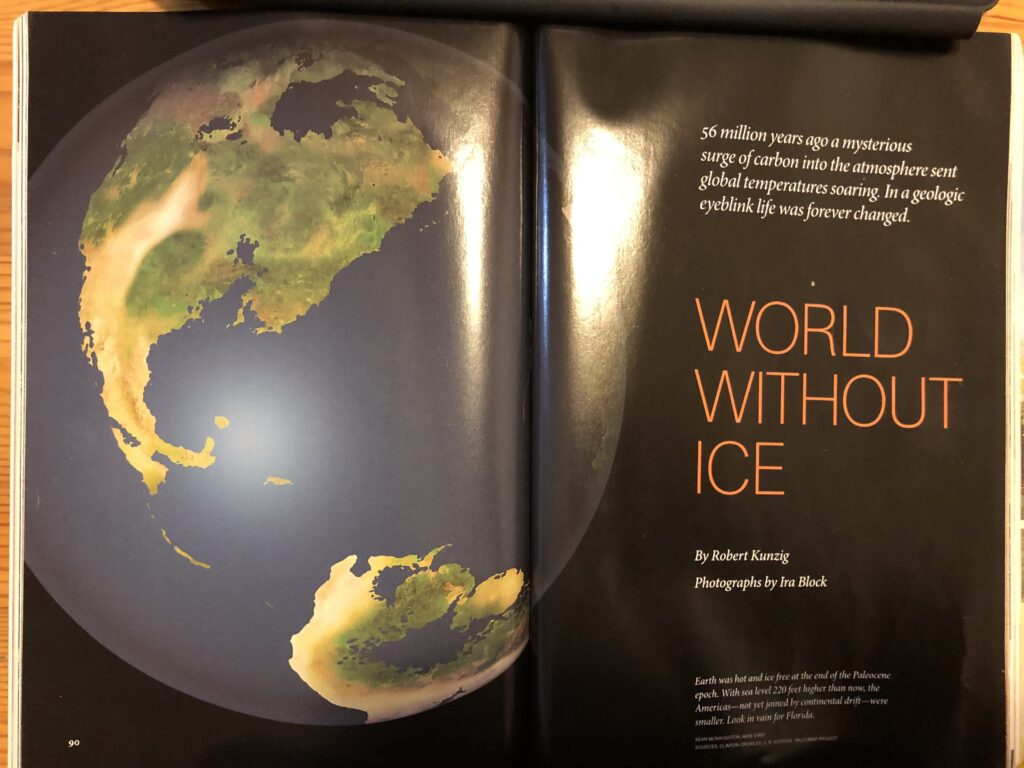
In Chapter 5 “Hothouse Earth” of Our Fragile Moment, Dr. Mann debunks the hypothesis of a methane bomb. He stated that during the PETM, “there was no catastrophic release of methane hydrates. Despite ongoing accounts even in the mainstream media that imply otherwise, there was no PETM ‘methane bomb.’ The methane hydrate feedback during the PETM appears to have been at most ten percent of the total carbon release.”
He went on to write that “There are caveats, of course. The rate of warming today is more than ten times greater than the PETM warming, and there is evidence that the destabilization of methane hydrates might be greater in a scenario of more-rapid warming…There is no evidence, however, that this is happening currently.”
However, we cannot dismiss methane as part of the climate change threat. As Dr Mann informs us the next paragraph,
“That does not mean that methane isn’t a problem today. It is. But it is not a climate feedback. Rather it is human-caused climate driver…We are witnessing a rise in methane concentrations due to natural gas extraction, livestock, and farming. The methane emissions appear to be from us, not some feedback cycle. Given that the rise in methane is responsible for about twenty-five percent of the warming is recent decades, reducing human methane emissions must be part of any comprehensive plan for addressing the climate crisis.”
Dr. Mann likes to use one of my favorite insights from his friend, mentor, and our hero the great climate scientist and communicator Stephen Schneider. He observed that the climate change debated is too often framed as “the end of the world” vs. “good for you.” Dr. Schneider considered those to be the “lowest probability outcomes. The truth is probably between those results. Schneider liked to advise that “the truth is bad enough.”
Thus, Dr. Mann sees a low chance of runaway methane driven warming or even a mass extinction as lessons we can take away from studying the PETM. But, he cautions us:
“Now the bad news: Even if PETM-level warmth is out of reach, a policy of total climate inaction could warm up the planet to the point where substantial regions would become uninhabitably hot for human beings––a hotter, more crowded planet with less food and drinkable water. It doesn’t take a Venusian runaway greenhouse to yield a dystopian future. We would be losers in that scenario.”
Final Thoughts
Over the past 13 years, I enjoyed reading Dr. Michael Mann’s books. As a climate change communicator, organizer, writer, and public speaker, I found his books to be useful and instructive. I like his writing style. He writes in plain language for non-scientist business majors like me to understand the science. Any layperson could read this.
I recently finished the 2023 autobiography My Effin’ Life, by Geddy Lee, the lead singer, bass player, and keyboardist for the rock band Rush. My wife gave me the book for Christmas, and I loved reading it over the holidays. Oddly, the book had several words I had to look up in the dictionary. Geddy is a high school dropout. However, he and his Rush bandmates, Alex Lifeson and Neil Peart, liked to read books to kill the extra time on their road tours from 1974 to 2015. Neil Peart was such a bookworm that his bandmates called him “The Professor” or “Pratt” for short. The group wrote songs based on the prolific books read by their drummer and lyricist, Neil Peart. No doubt that Geddy Lee picked up a huge vocabulary by reading a lot and hanging out with Pratt.
On the other hand, Dr. Mann has a knack for writing climate books for the public where he does not lose the reader (me) in complicated words and intricate scientific concepts. He can hook his readers into climate science by referencing popular culture, such as the rock band The Police, movies like WarGames, and quoting Clint Eastwood in his books. Granted, his cultural touchstones are perfect for Generation X (his and my generation). Who knows if other generations would get his references, but they are perfect for me!
Again, at the beginning of Chapter 4, I loved Michael Mann’s quote from song lyrics from Sting, “Walking in my Footsteps,” from The Police album, Synchronicity. That was captivating for me to want to learn more about the extinction of the dinosaurs (K-Pg boundary) around 66 million years ago. Even more, Dr. Mann was effective at relating how the sudden loss of the “Mighty Brontosaurus” does and does not relate to modern day climate change.
My only suggestion to Dr. Michael Mann is the same critique I shared in my 2022 blog review of The New Climate War. I would like to see Dr. Mann or another climate scientist write a book about how we can use our understanding of climate science to reach the goal of net zero greenhouse gas emissions by 2050. In 2018, the IPCC released a summary report that we must cut our global greenhouse gas emissions in half by 2030 and down to net zero by 2050. But how? What are the best scientific solutions to get us to net zero greenhouse gas emissions by 2050?
At the very least, I would like to see Dr. Mann in a future book or writing to point us to the solutions that we should be doing. Or, to be respectful of his position to not be prescriptive as a scientist, who can he point us to that can show us the modeling, range of solutions, or needed collective actions to get us globally to net zero by 2050?
Having said that, I believe other climate organizers, besides me, climate “doomers” or “doomists” and even climate skeptics should read this book to learn what Earth’s geologic past can teach us and not teach us how to respond best to the climate crisis.
These were the key lessons that I learned from Michael Mann’s Our Fragile Moment:
- We need agency and urgency to solve the climate crisis.
- Uncertainty is not our friend, especially with scientific uncertainty about climate change.
- We can reduce the threat of climate change, but the window is closing fast.
- The geologic past is not always prologue to future nasty surprises with climate change.
I hope Dr. Mann will continue writing books because I enjoy reading them. Writing a book can be a massive undertaking. If Michael Mann decides to write another book, I will look forward to reading it.
